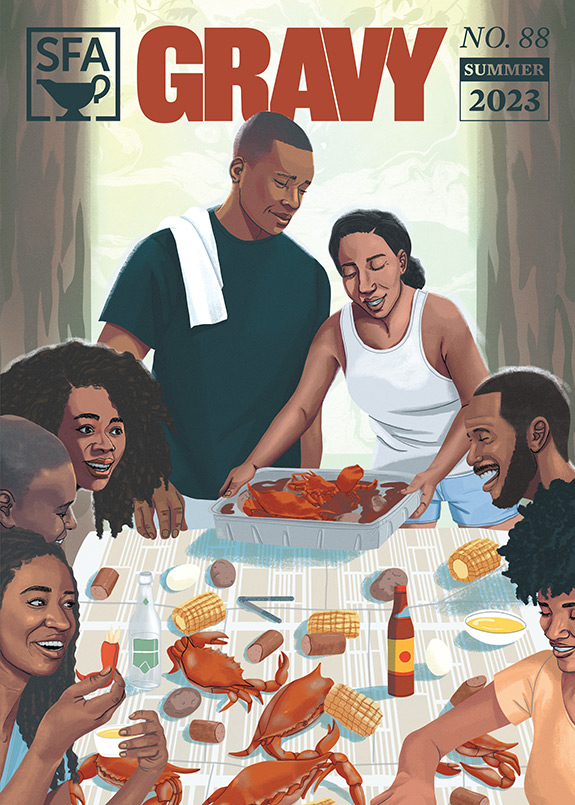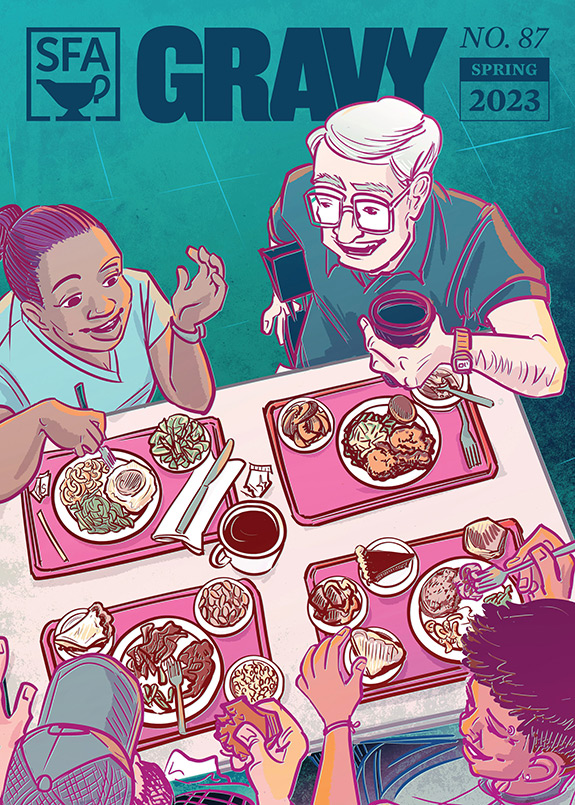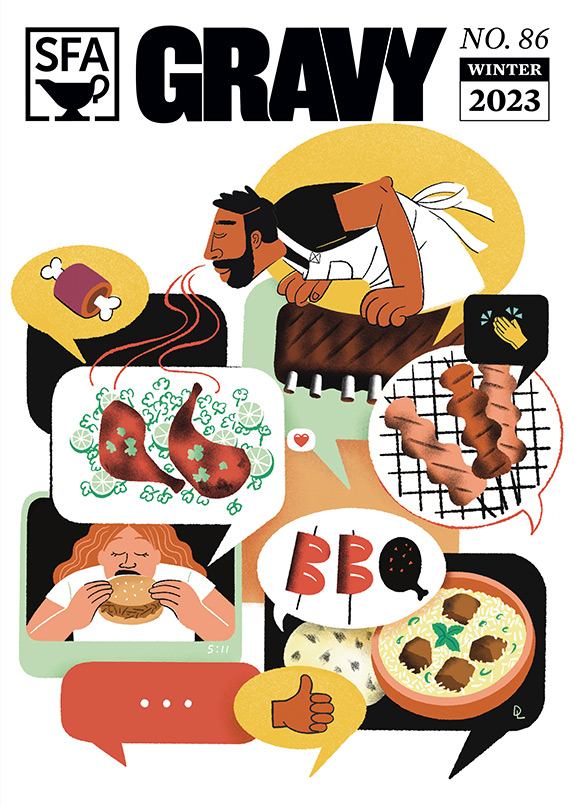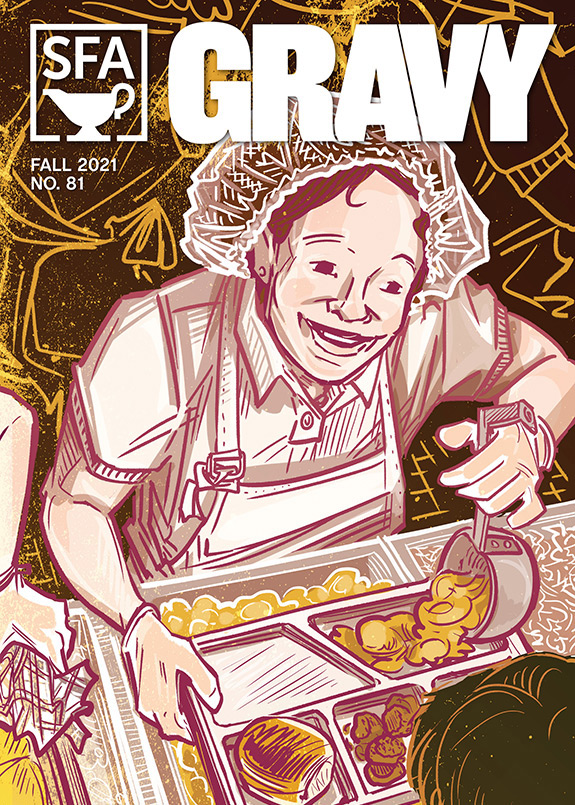
This story first appeared in the winter 2015-16 issue of our Gravy quarterly. The author, Allison Burkette, is an associate professor of linguistics at the University of Mississippi. Her research interests include language variation and its connection to cultural factors, which is the subject of her recent book, Language and Material Culture.
Join or renew your SFA membership to receive a subscription to Gravy in print. Thanks to SFA members, whose support helps make Gravy possible.
Cornpone
A borrowed term for a borrowed staple
by Allison Burkette
Sometimes, during the course of researching the relationship between language and culture, a single word or concept emerges that seems to carry with it the whole of history. Take “cornpone.”
I’ve seen several discussions of “cornpone”—or “ponebread,” or simply “pone”—that slip in a statement or two about the dish, and its name, being of Native American ancestry. Clues as to the more specific origins of “pone” can be found within the Indian Vocabularies. Reprinted as a series, these thin volumes contain vocabulary lists made by European colonists who recorded their contact with various Native American tribes. One of the earliest is Captain John Smith’s A Map of Virginia from 1612, which describes his encounters with the Powhatan, who are depicted as supping on “broth with the bread they called Ponap.”
Willam Strachey, also in the Virginia colony, wrote down a list of Powhatan words in his 1612 vocabulary. It contains entries for asapa (which he defines as “hasty pudding”), and two words, apones and appoans, which are likely singular and plural for “bread.”
In the 1640s, Lutheran priest Johannes Campanius collected examples from the area around Wilmington, Delaware, to compile his Vocabulary of the Unami Jargon, a list that contains several variously spelled entries for “bread”: poon, pone, and pane. Farther north, we have James Madison’s Vocabulary of New Jersey Delaware, collected in the 1850s and containing an entry for “bread” as apoon.
As Powhatan, Unami, and Delaware are all from the Algonquin language family, we can make an educated guess that pone is Algonquin. The geographical territory covered by these languages accounts for what would have been the colonial American corn belt. The whole East Coast was rife with corn-based contact between Native Americans and early colonialists. The persistence of the term “pone” as part of our American cornbread vocabulary suggests that different groups of colonists adopted this term at many points of contact throughout the Atlantic states.
Colonists didn’t just borrow the word for cornbread; they also borrowed Native American ways of preparing cornmeal, adapting the recipes to suit English palates. Native Americans made cornbread in one of two ways: with a paste of crushed green corn kernels, or from a batter made by adding water, salt, and animal fat to cornmeal. They would use a thin paste to make flatter cakes, resulting in something more like a cornmeal pancake. They treated a thicker batter as bread dough, shaping by hand into loaves for baking.
To the English colonists, cornmeal batters were reminiscent of what they called a “pudding” back in England. The colonists baked their cornmeal puddings in crusts like pies or boiled them in bags. These “hasty puddings” required no stirring and were quick to prepare A single batter could yield two dishes: porridge (or “mush”) and bread.
Writings from the Colonial era, including early American receipt books, show that the terms “bread” and “pudding” appear together, probably because the looser culinary construction of a pudding could be baked into a dense bread. These early cookbooks contain recipes for Baked Indian Pudding, Indian Hasty Pudding, and Boiled Indian Pudding, along with directions for making Indian Bread and Indian Cakes. There’s even a recipe for Indian Bannocks, “bannock” being a word of Scottish origin used to describe a dense, dark bread.
From poneap to pudding to pone, names and techniques blend and evolve across historical periods and cultural contact. They become part of the material world around us.








